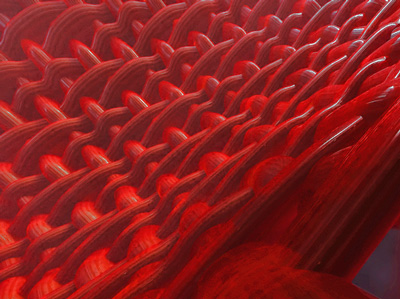Dasatinib shows promise in Duchenne muscular dystrophy
Posted: 6 January 2016 | Victoria White | 1 comment
Researchers tested the drug, commonly used to treat leukaemia, in zebrafish bred to carry Duchenne muscular dystrophy and recorded a 40% improvement in the condition of the fish…


In a new study, Dasatinib, a drug commonly used to treat leukaemia, is showing potential as a treatment that could slow the progression of Duchenne muscular dystrophy.
Researchers at the University of Sheffield investigated the drug, which works by blocking certain chemical signals that stimulate the growth of cancer cells. They found the same drug will also switch off similar signals in a protein implicated in Duchenne muscular dystrophy. This protein, called dystroglycan, has a part to play in maintaining healthy muscle tissue.
The team tested the drug in zebrafish bred to carry Duchenne muscular dystrophy and recorded a 40% improvement in the condition of the fish. Those fish treated with dasatinib were able to swim further and for longer than those in a control group. It could be that by combining the drug with other treatments currently under development, their effectiveness could be improved even further.
‘Encouraging findings’
“Dasatinib clearly has promise as a treatment for Duchenne muscular dystrophy,” says Professor Steve Winder, who led the research. “From our understanding of how the drug works we believe it could be effective in slowing muscle deterioration, prolonging patients’ ability to walk and also protecting their heart and respiratory muscles. There is the potential that if the drug were taken immediately upon diagnosis, the disease progression could be dramatically reduced.”
Because dasatinib is already cleared for clinical use, researchers hope that progress can be made more quickly towards trialling the drug in humans as a treatment for Duchenne muscular dystrophy. Experiments have already begun in mice, with promising results. Other drugs that work in a similar way to dasatinib are also under investigation by Professor Winder’s team.
The research was funded by Muscular Dystrophy UK, with additional funding from the Medical Research Council and the Duchenne Parent Project NL.
Dr Marita Pohlschmidt, Muscular Dystrophy UK’s Director of Research, said: “These are encouraging findings about a unique new avenue to treating Duchenne muscular dystrophy. It is a complex condition and we are of the view that it will take a combination of therapies to treat it effectively. Professor Winder’s approach could complement potential therapies currently advancing through clinical trials, making them more effective.”
Related conditions
Heart disease, Muscular dystrophy
Related organisations
Sheffield University




Hello
My 5 yrs Son is suffering from Dmd he is walking till now, can this medicine help him out and what should be the dose if yes
Please answer if possible
Waiting desperately
Thanks +91 9868348611